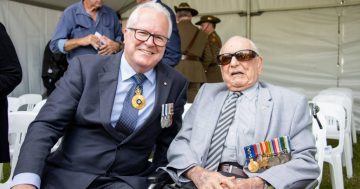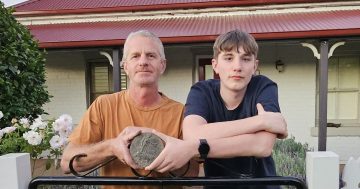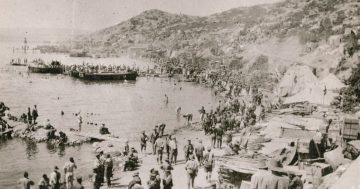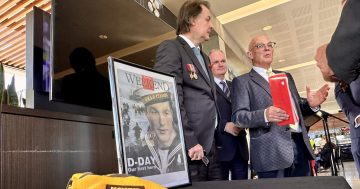
The Chipilly Six: Unsung heroes of the Great War offers a compelling tale of the lives of six soldiers and their experiences at Chipilly Spur on the Somme River in August 1918. Photo: Supplied.
By Lucas Jordan, NewSouth Books, $34.99
Historian Lucas Jordan has gone out of his way to deliver an exemplary historic record through The Chipilly Six. They were extraordinary men, living in extraordinary times, Australians who played a major part in the First World War.
On 9 August 1918 at Chipilly Spur on the Somme River, six Australians carried out one of the finest, yet least known, feats of arms in Australian military history. An entire British Army Corps is held up by German machine gunners. The battle has raged for 30 hours and more than 2000 men have fallen.
Then, two Australian sergeants, Jack Hayes and Harold Andrews, go absent without leave and cross the Somme ahead of British lines. Seeing that the British advance is stopped, they re-cross the river, gather four mates and return to drive the Germans off the spur.
What these men did was truly remarkable: the six diggers achieved what an entire British corps of 30,000 men supported by artillery and tanks could not, rousting the Germans from their positions on the heights of the spur.
The ‘Chipilly Six’ were Company Quartermaster Sergeant Jack Hayes, Sergeant Harold Andrews, Privates Billy Kane, George Stevens, Richard ‘Dick’ Turpin and Albert ‘Jerry’ Fuller.
“Their intelligence, bravery and initiative settled the outcome of the Battle of Amiens — one of the most decisive battles of the First World War,” Jordan said.
The extraordinary feats of the Chipilly Six and the personal stories of these diggers have been overlooked. Thanks to Jordan this is no longer the case. He could not accept that these men’s lives had fallen through the gaps of our history or that their life stories only merited an obituary in a newspaper.
He also acknowledges the significant roles women played in these men’s lives and more broadly.
Above all, “the book corrects many previous versions of what happened at Chipilly Spur. It aims to bring to life what these quintessential larrikin diggers could not put into words”.
The old saying that the generals are the first to write the books is true in this case. “Commanding officers, including Lieutenant-General John Monash, were quick to take the credit for what happened at Chipilly Spur — and the Chipilly Six were largely forgotten.”
Jordan has been able to recreate the battle through first-hand accounts written by members of the Chipilly Six, private papers held in archives in Australia and Britain, AIF records in the Australian War Memorial and official records including AIF enlistment papers and Repatriation Department files in the National Archives of Australia.
“While the events of 100 years ago might seem like ‘ancient history’, they are not to anyone interested in Australian culture or history. Important dynamics can shift when families tell and retell the stories of their ancestors, no matter how devastating the impact of war is on Australian society.”
This is a splendid piece of investigative narration, telling the story of the Chipilly Six’s role in the Battle of Amiens north of the Somme River. It sheds new light on the impact of war on families and communities and makes for compelling reading.
It’s also a captivating story of the Chipilly Six and how their families have lived with their legacy. Some of the memories recollected through generations in The Chipilly Six are fascinating.











